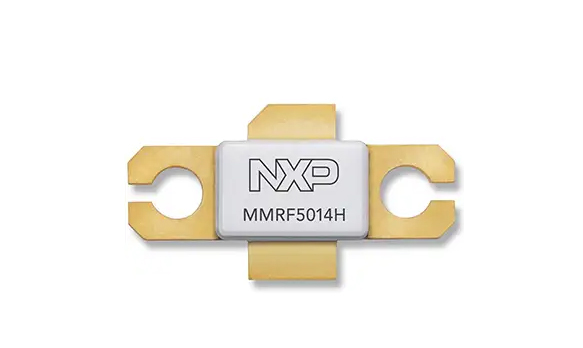Thermal management of RF power circuits essentially consists of removing excess heat from the components and sensitive areas of the circuit, so as to guarantee the best performance in all operating conditions and avoiding circuit degradation or failure.
Thermal management of RF power circuits essentially consists of removing excess heat from the components and sensitive areas of the circuit, so as to guarantee the best performance in all operating conditions and avoiding circuit degradation or failure. In most electronic components and circuits, the possibility of working at lower operating temperatures allows to improve both the performance and the reliability of the system. In general, solutions based on an appropriate combination between thermally conductive materials (capable of extracting heat from an active source) and thermal pathway (the common traces of conductive material in the PCB) are adopted. An important constraint that in many cases can affect thermal management solutions is the space available on the PCB: a large heat sink can certainly improve thermal efficiency, at the expense of a footprint that is certainly not negligible. Radio frequency circuits have an innate tendency to develop a high amount of heat, especially if the frequencies involved are high (microwave). Even if thermal management is an aspect that is related to all the components used, including connectors and waveguides, a correct thermal management approach shall start from the PCB.
PCB
The choice of PCB material is a crucial factor in the thermal management of RF power circuits. An ideal PCB should be able to dissipate the heat developed by components inside or outside the circuit without causing excessive power losses. A PCB for RF applications is composed of dielectric materials and conductive metals (typically copper), able to transfer high frequency signals with minimal loss and distortion. As the temperature increases, the PCB tends to expand, and then contract again when the temperature decreases. Therefore, it is essential to select materials with very similar coefficients of thermal expansion (CTE), in order to reduce possible thermal stress phenomena. The application of plated through holes (PTHs) on the PCB allows effective heat transfer from an active source (such as a power transistor) to a metal ground plane, crossing multiple layers of dielectric material. The thermal conductivity of the material, expressed in watts per meter per degree Kelvin (W/mK) is very important, too. A PCB with high thermal conductivity allows the circuit to withstand higher levels of power and heat. In high frequency RF circuits, it is important to achieve tight temperature control, as the relative dielectric constant of the PCB varies according to the temperature. This parameter, usually defined in units of ppm/°C, has a direct effect on the impedance of the RF circuit (typically 50 Ω), which must be kept as stable as possible. For extreme applications, such as microwave radars, additional cooling system (using air or glycol coolant) are often needed.
WBG materials
Wide bandgap materials, such as gallium nitride (GaN) and silicon carbide (SiC), allow to create devices with high power densities, capable of operating at high frequencies and temperatures with minimal power losses. GaN-based transistors and power amplifiers (PAs) are emerging as the main solid-state technology capable of replacing traveling wave tubes in radars, in electronic warfare (EW) systems, and in satellite telecommunication systems. The thermal management of these components is simplified by the recent introduction of materials such as metallized synthetic diamond. Aluminum diamond metal-matrix-composite (MMC) materials, for instance, have an extremely high thermal conductivity (500 W/mK or more) for efficient withdrawal of heat from GaN and other high-power semiconductors in high-frequency circuits.
Commercial devices
Conventional thermal management solutions pose important challenges for designers who develop applications in the aerospace, telecommunications, and defense sectors, where the right compromise between size, performance and reliability must be found. Chemical Vapour Deposition (CVD) diamond heat spreaders can help designers to achieve lower operating temperatures, thus simplifying the overall thermal management solution. Diamond Materials, a Spin-Off from Fraunhofer Institute IAF in Freiburg, is specialized in the preparation and processing of high purity CVD diamond disks. Among all materials, diamond has the highest thermal conductivity (up to 2000 W/mK, which is by a factor of five higher than that of copper). CVDs are suitable for thermal management, where heat spreaders (Figure 1) offer unbeatable performance, in particular if electrical isolation is required.

NXP Semiconductors offers a wide selection of RF power devices, including GaN, LDMOS, SiGe and GaAs technologies. An example is the MMRF5014H, a 125 W CW RF power transistor optimized for wideband operation up to 2700 MHz which also includes input matching for extended bandwidth performance. With its high gain and high ruggedness, the device is ideally suited for CW, pulse and wideband RF applications. Built with advanced GaN on SiC technology, the device (Figure 2) is suitable for military and commercial applications, including narrowband and multi-octave wideband amplifiers, radar, jammers and EMC testing.

Qorvo, a provider of innovative and high-performance RF solutions for advanced wireless devices, defense radar and communications, offers power amplifiers (PA) solutions across many frequency and power levels. The TGA2219 is a 25W GaN Power Amplifier offered as a high-power MMIC amplifier designed for commercial and military radar (Ku-band included) and satellite communication systems. The TGA2219 amplifier is developed using TriQuint’s production 0.15um GaN on SiC process, and it operates from 13.4GHz to 16.5GHz, providing 25W of saturated output power with 27dB of large signal gain and greater than 28% power added efficiency. The TGA2219 is fully matched to 50Ω with integrated DC blocking capacitors on RF ports to simplify system integration.






